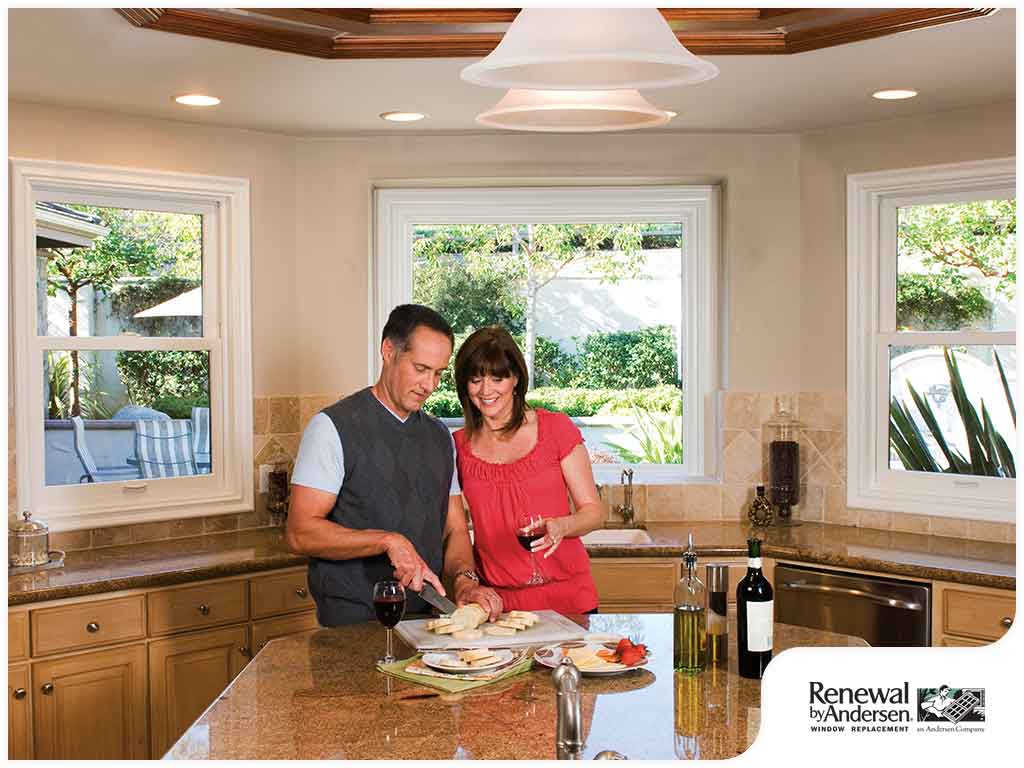MENU


Don’t underestimate the energy savings you can get by installing new energy-efficient windows. According to the Department of Energy, drafty windows account for 25 to 30 percent of heating and cooling costs in the average household.
Keep in mind that there’s no such thing as a one-size-fits-all approach when choosing a window replacement. A single window type is not suited for all climates.
How can you tell if a particular unit is suited for your area’s climate?
Only windows that have met the EPA’s stringent requirements can receive the ENERGY STAR label. Underneath this label is the National Fenestration Rating Council’s (NFRC) rating, which will tell you if a window is suited for your area’s climate.
Here’s what each rating indicates:
Midwestern homeowners should look for windows with a low U-factor and a high SHGC. We recommend installing windows on the south side of your home—the part of your home that receives the most amount of sunlight—to take full advantage of solar heating in the winter.
There are several ways to improve your new windows’ energy efficiency. A big tip is to take advantage of the energy-efficient features manufacturers offer. Here are some window features that can boost your window’s energy-efficiency and reduce your household’s carbon footprint:
Wide Glass Panels and Glass Coatings
Windows with wide glass areas, like bay windows, can provide better indoor natural lighting. Keep in mind, however, that wide windows are not without disadvantages. For instance, a wider window glass area translates to an increased risk of heat loss or gain, which can in turn increase your household’s electricity consumption. That’s why glass coatings are a must for windows with wide glass areas.
Renewal by Andersen offers a wide range of energy-efficient glass options. Our most energy-efficient glass option is the High-Performance™ Low-E4® glass. Compared to a standard dual-pane window, a window with High-Performance Low-E4 glass is 56% more efficient in summer and 45% more efficient in winter.
Multiple Panes
Bay windows with multiple-pane glass panes have better insulative capabilities than a standard single-pane window. Dual-or-triple-pane windows are usually filled with argon, a colorless and non-toxic gas that can prevent heat transfer and increase your window’s energy efficiency.
Insulative Frame Materials
Combined with an insulative frame material, glass coatings and multiple window panes can help reduce your home’s electricity consumption and overall carbon footprint. If you’re looking for an eco-friendly, energy-efficient frame material, Fibrex® is a composite made from reclaimed wood fibers and has excellent insulative capabilities.
Remember: One feature alone won’t make your window energy-efficient. When looking for an energy-efficient window replacement, you need to take into account the window’s entire performance.
As part of our Signature Service, Renewal by Andersen offers free consultations. These consultations are an opportunity for us to learn more about our customers’ needs and preferences and for our consultants to suggest ways on how to maximize your ROI on your new specialty windows.
Renewal by Andersen of Cincinnati offers a wide variety of premium specialty windows. To schedule a free consultation with one of our design experts, call us at (866) 609-5033 or fill out this form. We serve homeowners in Mason, Sharonville and Loveland, OH, as well as the surrounding communities.